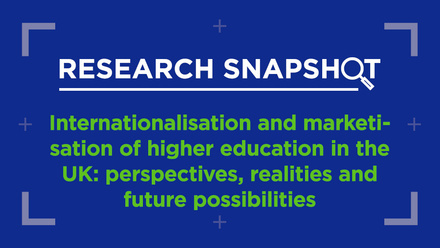9 key components of positioning your institution abroad

With thousands of universities around the world competing in the international arena, it can be challenging for higher education institutions to differentiate themselves. In order to compete, colleges and universities need to effectively showcase their strengths when partnering with global stakeholders and recruiting international students.
Academic institutions pride themselves on the research they conduct, the educational programming they offer and the facilities where students develop their skills. However, most need to highlight their uniqueness to their international partners eloquently. Higher education institutions must pay attention to several key aspects to position themselves effectively abroad. Here are 9 important areas of focus for doing so.
1) Academic programmes
Most colleges and universities offer mainstream academic programmes such as business and computer science. However, it is more efficient to promote unique undergraduate and graduate programming to differentiate themselves from other educational institutions. In the United Kingdom, the University of Northampton has a programme on leather technology, which is innovative as it aligns with the leather brand of Dr Martens, a company which has a proud history in Northamptonshire. Another example in the United States is Richard Bland College of William and Mary, who have developed an innovative undergraduate program on drones and aviation.
2) Historical importance
Academic institutions can also spotlight their background. The historical significance of a college or university brings essential context to international audiences to understand their overall impact. For example, in Italy, the University of Bologna is the oldest university in the world, established in 1088. It brings a certain prestige to study at this university, where three popes are among its alumni.
3) Industry connections
Colleges and universities should highlight their industry connections to position themselves internationally. Key partnerships with local industry players with whom academic institutions are conducting research projects are an exciting feature. In addition, local organisations and companies where students can perform internships and practicums are critical when recruiting international students. Finally, in some instances, higher education institutions have collaborative agreements with industry so that their graduates can access employment opportunities. All of these partnerships will help position your institution abroad.
4) Inspiring faculty
Many students register for higher education institutions based on their faculty members. This is mainly seen in students pursuing graduate studies. Colleges and universities can spotlight professors with profound professional experiences, such as experts from the world of industry and business. Faculty members whose research has been cited widely present another attractive option for positioning academic institutions globally.
5) Learning and teaching model
The approach to how higher education institutions deliver their programmes varies from college to college and university to university. Typically, academic institutions have either a theoretical or practical approach. However, some universities are spearheading new pedagogical models. An example in the United Kingdom is University Academy 92, where their students follow a ground-breaking studying model. Their approach is for their students to take courses on a module basis, where they learn one subject at a time for a number of weeks, then proceed to another topic. This model ensures that students immerse themselves in only one subject so that they can master it before learning another.
6) Outstanding alumni
Another way to position yourself internationally is to highlight alums that have done impactful work. One example is Cees Links, the inventor of Wi-Fi, and Bram Nauta, whose research designed integrated circuits (chips), who both studied electrical engineering at the now University of Twente located in the east of the Netherlands.
7) State-of-the-art facilities
Showcasing the building infrastructure, the laboratories and the technological equipment that colleges and universities possess brings added value to international partners and students. A clear example is the University of Portsmouth in the United Kingdom, which has a Centre for Creative and Immersive Extended Reality where students can access extended reality facilities and a volumetric capture studio with a ‘4DViews Holosys’ system, which only Portsmouth and another private company own in England – giving students the opportunity to access equipment that no other academic institution can offer.
8) Storytelling
Building on the history of an institution's location can be enamouring. Through storytelling, colleges and universities can share fascinating facts about their locality or city's history with international stakeholders. For example, the German city of Leipzig is home to numerous universities. However, many non-German individuals may ignore the crucial role that the city played in the history of Germany: before the old East German regime fell apart, there were demonstrations, and people feared violence, but in Leipzig, individuals had a peaceful protest where they showed up with candles in front of the soldiers requesting the gates to be opened. They were not shot, and days later, the wall was dropped. Knowing this historical event enhances the experience of studying in Leipzig. Further, there are two libraries in Germany where you can find all the books that have ever been published in German. In Leipzig, you can find one of those libraries.
9) Research impact
Rather than listing all the research that each academic unit or faculty is leading, colleges and universities should focus on their research that is having a significant impact, such as research that has resulted in the development of public policies by government, studies on topics that are up-and-coming, or outcomes that have been commercialised.
With the increasing pressures to compete in the international market, colleges and universities must have a more targeted approach when positioning their institution abroad. Reflecting on the unique selling propositions of your academic institution, especially in terms of the nine areas mentioned above, will aid in understanding what makes your higher education institution distinctive.






